|
The Public Square on the West Side of Kamakura Station (鎌倉駅西口広場) |
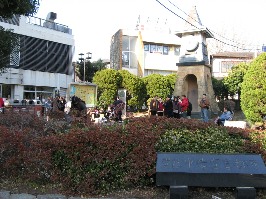
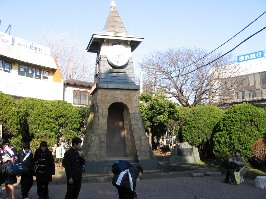
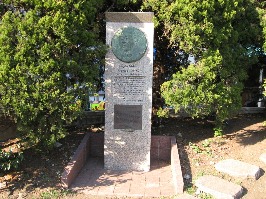
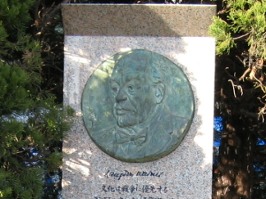
Story; The west side of Kamakura Station took on a completely new look in 1983 when the station building
was remodeled. A small public square was created immediately in front of the station. The square itself is regularly used as an assembly point, especially for members of sightseeing and tourist groups.
The clock tower, with its peaked roof, once graced the roof of the station building and was a popular landmark in Kamakura but now stands at the rear of the square.
The clock tower is 9.4 meters high, and its base is finished with yellow stones.
To the left of the clock tower stands a stone monument dedicated to Dr. Langdon Warner, who, according to the attached plaque, took great effort to remove Kamakura from the list of the target of attack in the Second World War. It naturally included Kyoto and Nara, because they held countless
cultural treasures. His likeness, in relief, is also on the plaque.
The plaque reads as follows:
"文化は戦争に優先する。
ラングドン・ウォーナー (米国) 1881-1955
CULTURE TAKES PRECEDENCE OVER WAR.
DR. LANGDON WARNER (U.S.A.) 1881-1955
ARTS AND CULTURE AND HAD A PROFOUND KNOWLEDGE OF THEM.
WITH THE OUTBREAK OF THE PACIFIC WAR, DR. WARNER
STRONGLY APPEALED NEVER TO EXTEND THE DISASTER OF WAR
TO THE THREE ANCIENT CITIES OF JAPAN--KYOTO, NARA,
KAMAKURA--AS WELL AS THE ARTISTIC AND HISTORIC
ARCHTECTURE ALL OVER JAPAN. AS A RESULT, A GREAT DEAL
OF CULTURAL TREASURES WERE SAVED FROM THE BOMBING.
ON THE OCCASION OF THE TWENTIETH ANNIVERSARY OF THE
ANCIENT CAPITAL PRESERVATION LAW ENACTMENT, WE, ALL
THE PEOPLE CONCERNED WHO LOVE KAMAKURA, DETERMINED BY
OUR MUTUAL AGREEMENT TO LET DR. WARNER'S MONUMENT STAND
FOREVER IN MEMORIAL TO HIS STRONG WILL AND DEVOTION TO
THE PROTECTION OF OUR HISTORY AND CULTURE.
ASSOCIATION FOR THE ERECTION OF A MONUMENT
IN MEMORY OF
DR. LANGDON WARNER"
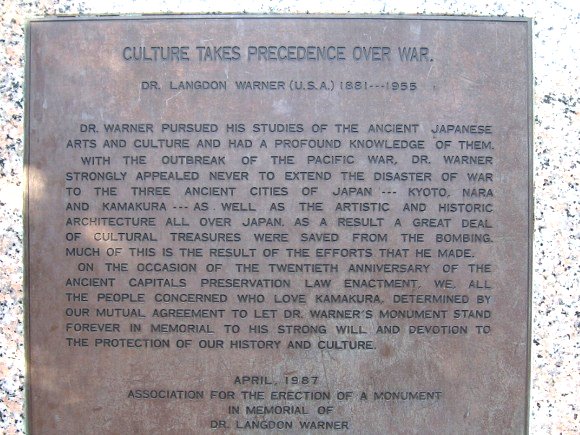
|
The Former Site of the Monchujo (問注所跡) |
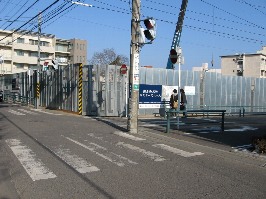
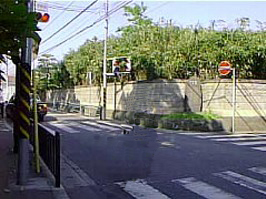
Location: 300 meters southwest from JR Kamakura Station.
Story: The Monchujo, the Board of Inquiry, was established in the Kamakura period, and a major government office, along with Samurai-dokoro and Man-dokoro. It originally located within the bakufu's grounds in Okura (大蔵).
However, following a fire in 1261, it was moved elsewhere. One theory suggests that the new location must have been in this area because there was, and is, a bridge nearby whose name is Saikyobashi (裁許橋, saikyo meaning "a judgment passed by a court of law").
The site is marked by a stone monument erected by the Kamakura Youth Association.
|
Saikyobashi Bridge (裁許橋) |
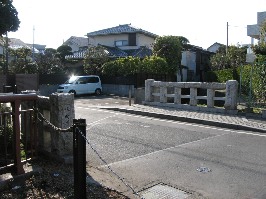
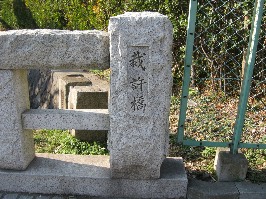
Location: 300 meters southwest from JR Kamakura Station.
Origin of the name: The bridge's name, Saikyo, is said to derive from the term saikyo, meaning "a judgment passed by a court of law."
Another story says that because of its association with Saigyo (西行, 1118-90), a warrior who later became a noted priest and poet, the bridge came to be called Saigyobashi. In 1168, Saigyo had traveled here from Kyoto. When he was walking in this vicinity, he was asked his name on this bridge by Minamoto no Yoritomo. Saigyo was invited to Yoritomo's residence. They talked over many things over night. Yoritomo is said to be proud of having talk with Saigyo later.
The bridge is now made of stone, but was originally wood.